
DEFENCE SCIENCE JOURNAL
Scope & Guideline
Shaping the Future of Defence with Cutting-edge Research
Introduction
Aims and Scopes
- Advanced Defence Technologies:
The journal focuses on the development and optimization of cutting-edge technologies in defence, including missile systems, unmanned aerial vehicles, and radar technologies. - Materials Science and Engineering:
Research on materials used in defence applications, including ballistic materials, composites, and high-temperature resistant coatings, is a core area of interest. - Cybersecurity and Information Assurance:
The journal publishes research on cryptography, secure communications, and cybersecurity measures tailored for military applications. - Simulation and Modelling:
A significant emphasis is placed on computational models and simulations that aid in the analysis and design of defence systems. - Human Factors and Ergonomics:
Studies focusing on human factors in military operations, including decision-making processes and human-machine interaction, are integral to the journal's scope. - Environmental and Sustainability Research:
Research addressing the environmental impact of military operations and the development of sustainable practices within defence logistics and supply chains. - Systems Engineering and Decision Support:
The journal promotes research in systems engineering methodologies, including optimization techniques for military decision-making and resource allocation.
Trending and Emerging
- Artificial Intelligence and Machine Learning:
There is a significant trend towards the application of AI and machine learning in defence systems, including autonomous vehicles, target recognition, and data analysis. - Cyber Warfare and Information Security:
Research in cybersecurity, particularly concerning military applications and safeguarding sensitive information, is on the rise as cyber threats become more sophisticated. - Sustainable Defence Practices:
Emerging themes include the environmental impact of military operations, with increasing research on sustainable materials and logistics practices in the defence sector. - Advanced Sensor Technologies:
The development of advanced sensor systems for surveillance and reconnaissance, including unmanned systems and smart sensors, is gaining traction. - Additive Manufacturing and Advanced Materials:
Research into additive manufacturing techniques for producing lightweight, high-performance materials and components for defence applications is increasingly prominent. - Human Factors Engineering in Military Systems:
An emerging focus on ergonomics and human factors in the design and operation of military systems, ensuring that human operators can effectively interact with complex technologies.
Declining or Waning
- Traditional Military Tactics:
Research focused on conventional military tactics and strategies is becoming less prevalent, as modern warfare increasingly emphasizes technological innovation and asymmetric strategies. - Heavy Conventional Armaments:
There is a noticeable decline in studies centered around heavy conventional weaponry, reflecting a shift towards lighter, more versatile systems and technologies. - Static Defence Systems:
Research on static defence installations, such as fortifications and traditional barriers, is waning, with an increased focus on mobile and adaptive defence solutions. - Legacy Systems and Technologies:
As the military transitions to modernized platforms, research on legacy systems is declining, with a push towards exploring next-generation technologies.
Similar Journals

Scientia Iranica
Elevating voices in chemistry, engineering, and beyond.Scientia Iranica is a multidisciplinary journal published by SHARIF UNIVERSITY OF TECHNOLOGY, serving as a vital platform for researchers and professionals in the fields of Chemistry, Civil and Structural Engineering, Computer Science, Engineering, Industrial and Manufacturing Engineering, Materials Science, Mechanical Engineering, and Physics and Astronomy. Established in 1999 and converging until 2024, the journal has swiftly ascended in the academic realm, achieving a commendable status with several Q3 classifications across a variety of disciplines and a Q2 in Engineering (miscellaneous) in its 2023 quartile rankings. With its notable Scopus Ranks reflecting a consistent percentile presence in several categories, Scientia Iranica emphasizes rigorous peer-reviewed research and cutting-edge findings, thereby contributing substantially to the advancement of knowledge in its areas of focus. Although not available as open access, the journal remains essential, offering critical insights and fostering collaboration among scholars in Iran and globally, thus enhancing the visibility and impact of innovative research outcomes.
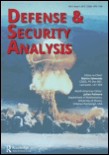
Defence and Security Analysis
Innovating Research for a Safer Tomorrow.Defence and Security Analysis is an esteemed journal that focuses on the critical intersections of security studies, international relations, and geopolitical dynamics. Published by Routledge Journals, Taylor & Francis Ltd in the United Kingdom, this journal serves as a vital platform for scholars, practitioners, and students to disseminate innovative research and insights concerning contemporary defence and security issues. With an ISSN of 1475-1798 and an E-ISSN of 1475-1801, it has achieved a commendable standing, ranking in the Q2 category for Political Science and International Relations and Q3 for Geography, Planning and Development as of 2023. The journal covers a range of pertinent topics with a dedicated convergence of years from 2003 to 2024, making it an invaluable resource for anyone looking to engage deeply with this evolving field. Although it is not open access, its rich content is crucial for informing policy and academic discourse on global security challenges.
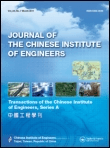
JOURNAL OF THE CHINESE INSTITUTE OF ENGINEERS
Elevating engineering insights for researchers and professionals alike.The Journal of the Chinese Institute of Engineers, published by Taylor & Francis Ltd, serves as a vital platform for the dissemination of innovative research in the field of engineering. Since its inception in 1978, this journal has been committed to advancing knowledge and fostering academic dialogue in general engineering and its multidisciplinary applications. With its current ranking of Q3 in the 2023 Engineering (miscellaneous) category, it is recognized within Scopus as the 139th out of 307 journals, placing it in the 54th percentile of its field. The journal facilitates access to a diverse range of high-quality articles, promoting a deeper understanding of contemporary engineering challenges. Although it does not operate on an open-access model, its insights are invaluable for researchers, professionals, and students eager to stay at the forefront of engineering advancements. Located in Oxford, England, the journal is poised to continue its influential role in shaping the future of engineering research until 2024 and beyond.
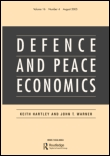
DEFENCE AND PEACE ECONOMICS
Exploring the Economics of Security and PeaceDEFENCE AND PEACE ECONOMICS, published by Taylor & Francis Ltd, stands as a vital interdisciplinary journal dedicated to the exploration of economic principles and policy frameworks within the context of defense and peace studies. With its ISSN 1024-2694 and E-ISSN 1476-8267, this esteemed journal has been contributing to the field since 1994, maintaining a reputation for rigorous academic research evidenced by its Q2 ranking in both Economics and Econometrics and Social Sciences (miscellaneous) categories for 2023. Positioned in the 84th percentile in Social Sciences and 68th percentile in Economics according to Scopus, it serves as a pivotal resource for researchers, policymakers, and educators alike. The journal aims to foster a deeper understanding of the economic dimensions of national security, conflict resolution, and peacebuilding, and it encourages submissions that address contemporary challenges and theoretical advancements in these fields. Although not an open-access journal, its insightful articles are accessible through institutional subscriptions, making them available to a wide audience. DEFENCE AND PEACE ECONOMICS continues to shape discourse and provide critical insights necessary for navigating the complexities of global security and economic interplay.

Journal of ICT Research and Applications
Fostering Global Collaboration in ICT ResearchJournal of ICT Research and Applications, published by ITB JOURNAL PUBL, is a prominent open-access journal since 2013 that serves as a vital platform for disseminating innovative research in the fields of Information and Communication Technology. Based in Indonesia, this journal provides a valuable resource for researchers, professionals, and students interested in the evolving landscape of computer science, electrical engineering, and information systems. Though currently placed in Q4 across its relevant categories for the year 2023, the journal aims to enhance its visibility and impact within the academic community by inviting high-quality submissions that explore interdisciplinary approaches and novel applications of ICT. With its transparent open-access model, the Journal of ICT Research and Applications ensures that research findings are readily accessible, fostering collaboration and knowledge sharing among scholars worldwide. Its commitment to advancing ICT research and practices solidifies its role as a meaningful contributor to these dynamic fields.

Results in Engineering
Transforming Challenges into Breakthroughs in EngineeringResults in Engineering is an esteemed open-access journal published by Elsevier, dedicated to advancing the field of engineering through high-quality, innovative research. Since its inception in 2019, this journal has rapidly established itself within the academic community, evidenced by its prestigious Q1 ranking in the Engineering (miscellaneous) category for 2023 and a remarkable ranking of #54 out of 307 in General Engineering according to the Scopus database, placing it in the 82nd percentile of its category. Located in the Netherlands, Results in Engineering provides a global platform for researchers, professionals, and students to disseminate their findings and foster collaboration across diverse engineering disciplines. The journal's commitment to open access ensures that valuable research is accessible to a wider audience, fostering innovation and knowledge sharing. With a progressive approach to publication, Results in Engineering seeks to enhance the engineering landscape by publishing cutting-edge studies that address contemporary challenges and solutions in the field.

Engineering Technology & Applied Science Research
Empowering Knowledge Sharing Across Engineering DisciplinesEngineering Technology & Applied Science Research is a distinguished open-access journal published by EOS ASSOC based in Greece, focusing on the multifaceted realms of engineering, materials science, and signal processing. Established in 2011, this journal has rapidly gained recognition, achieving a Q2 ranking in Engineering (miscellaneous) and a Q3 ranking in both Materials Science and Signal Processing for 2023, showcasing its growing impact in these critical fields. With an emphasis on disseminating high-quality research and fostering innovation, ETASR provides a platform for researchers, professionals, and students to share their findings and explore emerging technologies. The journal's Scopus rankings further reinforce its significance, positioning it strongly within the top percentiles among its peers. With a commitment to open access, ETASR ensures that research is accessible to a global audience, promoting collaboration and knowledge sharing across disciplines. Whether you are a seasoned researcher or a budding student, ETASR is an invaluable resource for advancing your understanding and contributing to the cutting-edge developments in engineering and applied sciences.
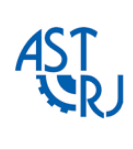
Advances in Science and Technology-Research Journal
Unlocking Innovations, Shaping the FutureAdvances in Science and Technology-Research Journal, published by Lublin University of Technology in Poland, is an esteemed open access journal that has been enriching the scholarly landscape since 2012. With an ISSN of 2080-4075 and an E-ISSN of 2299-8624, this journal is dedicated to disseminating cutting-edge research across Computer Science, Engineering, Environmental Science, and Materials Science. Recognized within the Q3 quartile in 2023 across various fields, it holds respectable rankings in Scopus, including Rank #184 in General Engineering and Rank #122 in Materials Science. The journal’s commitment to open access fosters wider dissemination and engagement within the scientific community, making it a vital resource for researchers, professionals, and students alike. As the fields of science and technology continue to evolve, this journal serves as a vital conduit for innovative ideas and collaborative research, inviting contributions that push the boundaries of knowledge.

International Journal of Innovative Computing Information and Control
Empowering research in computing and control.International Journal of Innovative Computing Information and Control, published by ICIC INT, is a prominent platform dedicated to advancing the fields of computational theory, information systems, software engineering, and theoretical computer science. Since its inception in 2007, the journal has garnered attention for its rigorous peer-reviewed research and has established itself within the academic community, attaining a notable Q3 quartile ranking across its categories as of 2023. With an impressive track record of convergence from 2007 to 2024, this journal offers a wealth of insights and innovations for researchers and professionals striving to push the boundaries of technology and computing. While it operates under a subscription model, the journal's commitment to enhancing knowledge in the ever-evolving landscape of computational sciences makes it an essential resource for academics, providing timely articles that address contemporary challenges in the field.
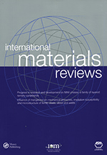
INTERNATIONAL MATERIALS REVIEWS
Connecting Theory and Practice in Materials EngineeringINTERNATIONAL MATERIALS REVIEWS, published by SAGE Publications Inc, is a leading journal dedicated to the comprehensive analysis of contemporary research in the fields of materials chemistry, mechanical engineering, mechanics of materials, and the study of metals and alloys. With an impressive impact factor and a Q1 ranking across multiple categories such as Materials Chemistry and Mechanical Engineering in 2023, it ranks amongst the top journals for innovative materials research. The journal has a long-standing history since its inception in 1987 and continues to serve as a crucial resource for academics and professionals alike. Although it is not open access, it is renowned for its rigorous peer-review process and its commitment to disseminating high-quality materials science research globally. Researchers, students, and industry professionals benefit greatly from the journal's insightful reviews, both for the advancement of theoretical knowledge and practical applications within the fast-evolving materials field.